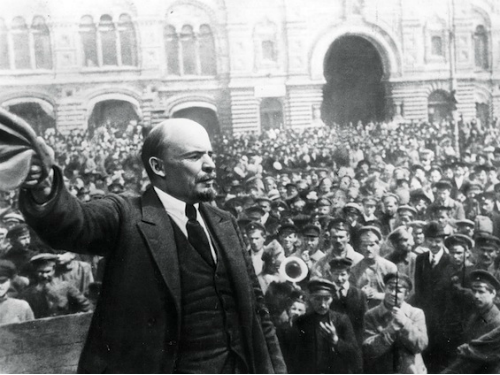
“It is amazing how many unexpected solutions come up when you hold film stock in your hands. Just like letters: they are born on the top of the pen.”
Esfir Shub
“Necessity is the mother of invention, goes the cliché. Necessity drove Esfir Shub to become a brilliant film editor in the years immediately after the 1917 Russian Revolution. In the early 1920s filmmaking resources were scarce, but film was a key modern art form and a crucial means of conveying information to people across the newly formed Soviet Republic. Shub’s work in the film industry involved re-editing foreign films, such as Fritz Lang’s Dr. Mabuse or trashy US serials, making them ‘ideologically correct’. This was a key cultural role − in 1924 over 90 percent of films shown were produced in capitalist countries. Fritz Lang’s film, for example, was converted into an anti-capitalist tale called Gilded Rat. The Russian film director Sergei Eisenstein watched Shub working, and learned from her. Shub found a politically viable solution to a materials crisis, and she learned how to montage films − editing together different camera shots for effect.
In 1927 Shub made her first independent documentary − The Fall of the Romanov Dynasty. It was part of a trilogy on Russian history, reconstructing the past through newsreel footage and the home movies of the Romanov dynasty who ruled Russia before 1917. Documentary film of whatever type − news, industrial footage, home movies − could yield information about reality. Shub’s compilation film showed the Romanovs at their summer home and carrying out duties of state, the carnage of war and Lenin agitating.
Much of the material had originally been produced to serve right wing causes, but Shub was able to skilfully redeploy the clips in a new context. In her first job at the film company Goskino, Shub met the filmmaker Dziga Vertov. He was also a documentary maker and, despite later debates between them, Shub considered herself his pupil. In 1927 she argued in the journal Novyi Lef that the controversy between staged and unstaged films − epitomised in the work of Eisenstein and Vertov respectively − was ‘the basic issue of contemporary cinema’.”
Esther Leslie1
- 1Esther Leslie, “Esfir Shub: a new message from old film footage”.

